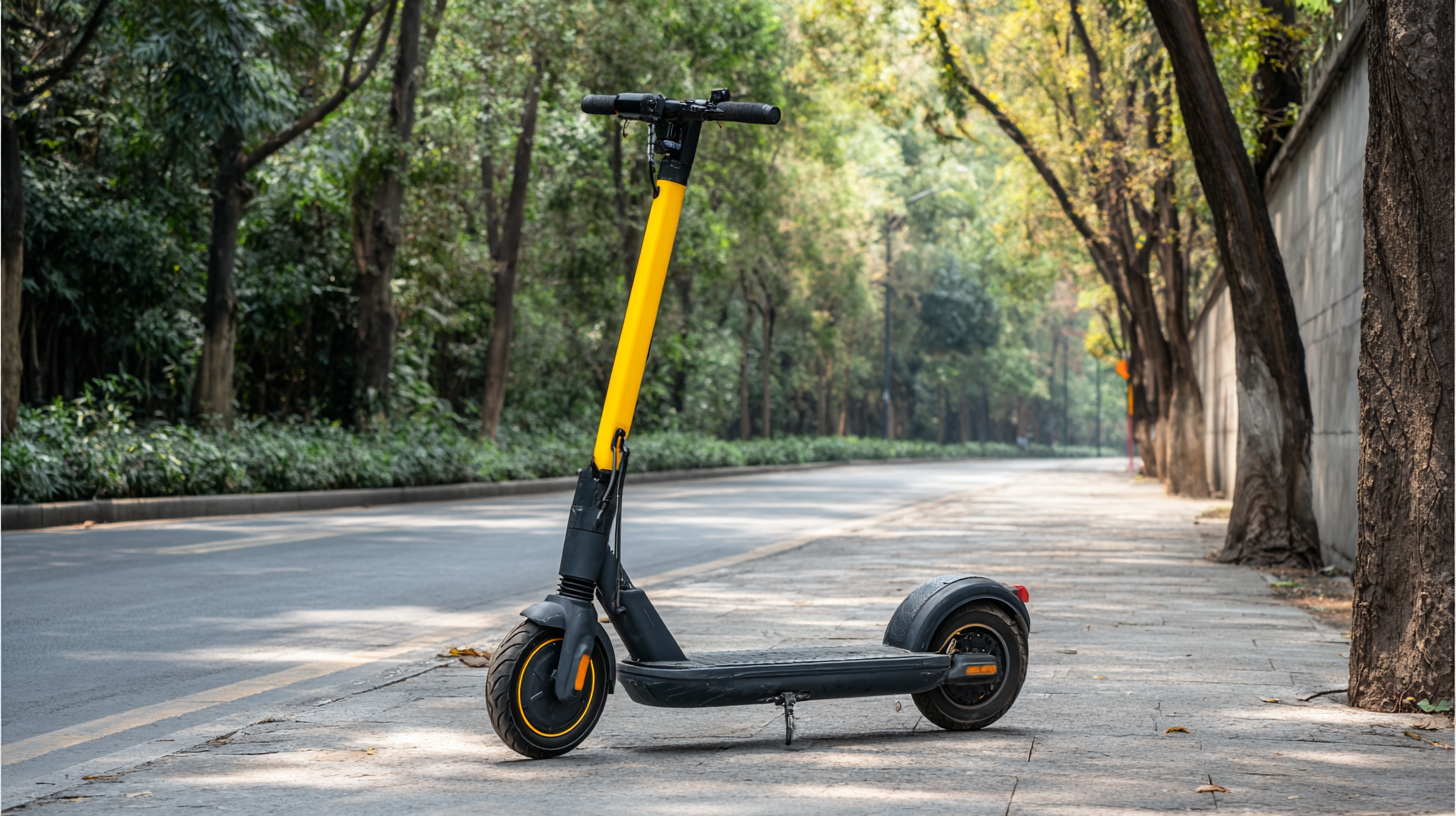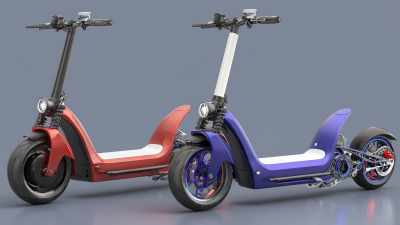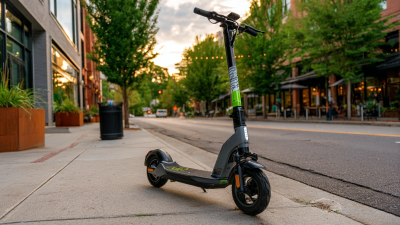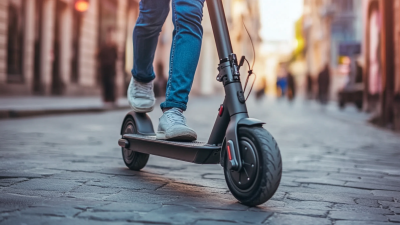As urban congestion and environmental concerns continue to rise, the demand for alternative commuting solutions is transforming the landscape of transportation. Among these alternatives, the Scooter Electric Adult has emerged as a viable eco-friendly option.
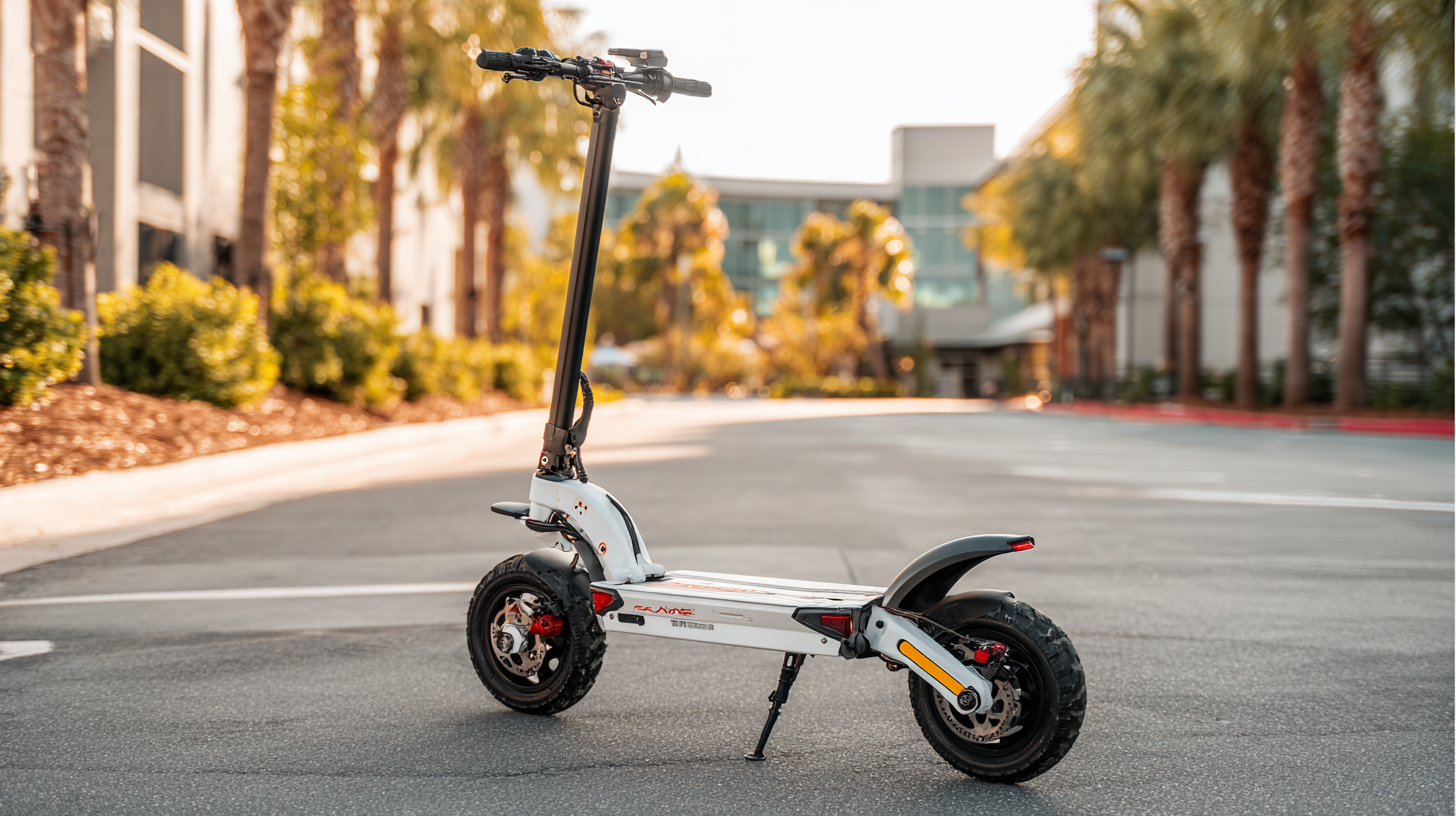 According to a report by Fortune Business Insights, the global electric scooter market is projected to reach $41.98 billion by 2028, expanding at a compound annual growth rate (CAGR) of 7.6% from 2021 to 2028. This growth can be attributed to the increasing emphasis on reducing carbon emissions and the need for efficient urban mobility solutions.
Furthermore, the convenience and affordability of electric scooters appeal to adults seeking practical commuting alternatives that align with their eco-conscious lifestyles. As cities evolve to accommodate these innovative modes of transport, the rise of electric scooters for adults presents a promising avenue for sustainable urban commuting.
According to a report by Fortune Business Insights, the global electric scooter market is projected to reach $41.98 billion by 2028, expanding at a compound annual growth rate (CAGR) of 7.6% from 2021 to 2028. This growth can be attributed to the increasing emphasis on reducing carbon emissions and the need for efficient urban mobility solutions.
Furthermore, the convenience and affordability of electric scooters appeal to adults seeking practical commuting alternatives that align with their eco-conscious lifestyles. As cities evolve to accommodate these innovative modes of transport, the rise of electric scooters for adults presents a promising avenue for sustainable urban commuting.
Electric scooters are rapidly becoming a popular choice for urban commuters, primarily due to their significant environmental benefits. As cities grapple with increasing congestion and pollution levels, electric scooters offer a cleaner alternative to traditional modes of transportation. These scooters operate on electric power, generating zero tailpipe emissions and reducing the overall carbon footprint associated with commuting. By replacing cars for short to medium distances, electric scooters help decrease greenhouse gas emissions and improve air quality in densely populated areas.
Additionally, the use of electric scooters can lead to a decrease in the use of fossil fuels. With an increasing number of cities implementing scooter-sharing programs, access to this eco-friendly mode of transport has never been easier. Riders can conveniently pick up and drop off scooters, encouraging a shift away from car-centric cultures towards more sustainable urban mobility. This not only benefits individual riders but also contributes to a collective movement towards greener cities, supporting healthier lifestyles and promoting environmental consciousness among urban dwellers.
The rising popularity of electric scooters as a cost-effective commuting option for adults is reshaping urban mobility. Recent studies highlight that commuters can save up to $1,800 annually by switching from cars to electric scooters, considering factors such as fuel costs, parking fees, and maintenance expenses. With the initial investment in an electric scooter generally falling under $1,500, the long-term savings become undeniable, especially for those who navigate congested city traffic daily.
Moreover, the environmental benefits can't be ignored. Electric scooters contribute significantly to reducing carbon emissions, with some reports indicating that replacing a traditional gasoline vehicle with an electric scooter can cut CO₂ emissions by as much as 60%. As urban populations grow and congestion worsens, adopting scooters offers a nimble, zero-emission alternative that not only saves commuters money but also promotes cleaner air in urban settings. This shift towards eco-friendly transportation solutions highlights the potential for electric scooters to become a cornerstone of sustainable commuting.
Electric scooters are rapidly gaining popularity as a primary mode of urban transportation, largely due to their convenience and eco-friendliness. As cities continue to evolve, the necessity for effective safety features becomes paramount. Recent advancements in electric scooter technology, such as long-range batteries and robust braking systems, have made them a reliable choice for daily commuters. Data shows that electric scooters can cover distances of up to 70 miles on a single charge, making them ideal for urban environments where traffic congestion is common. Riders benefit from stability-enhancing designs and fortified frames, significantly reducing the risk of accidents while navigating through busy streets.

Moreover, safety features are paramount in ensuring that riders can confidently share the road with other vehicles. Emerging technologies, including integrated lights, reflective markers, and improved tire designs, enhance visibility and control. As reported, the increasing adoption of electric scooters has prompted manufacturers to focus on user safety, addressing concerns that often deter potential riders. Urban traffic has become increasingly unpredictable, and the development of smart riding technologies, such as collision detection and adaptive acceleration systems, play a crucial role in safeguarding riders. The evolution of electric scooters represents not only a shift toward more sustainable commuting options but also a movement toward safer urban mobility solutions.
When it comes to choosing the right electric scooter for adults, there are a few essential factors to consider that can greatly enhance your commuting experience. Start by evaluating your daily commute distance. If you're primarily using your scooter for short trips, a compact model with a range of 15-20 miles may suffice. However, for longer commutes, look for scooters with higher capacity batteries that offer extended mileage.
Tips: Always check the weight limit of the scooter to ensure it can accommodate your size and any additional cargo. Additionally, consider the terrain of your route; if you plan to tackle hills or rough surfaces, prioritize scooters with stronger motors and solid tires for better performance and safety.
Another critical aspect is portability. If you plan to carry your scooter on public transport or store it in small spaces, opt for a foldable model. These are not only convenient for short trips but also make it easier to transport.
Tips: Research the scooter's build quality and materials. Aluminum frames are lightweight yet sturdy, making them ideal for everyday use. Finally, don't forget to consider the features like braking systems, lighting, and suspension that can significantly impact your riding comfort and safety.
| Feature | Value |
|---|---|
| Battery Range | 20-40 miles |
| Maximum Speed | 15-30 mph |
| Weight Capacity | 220-300 lbs |
| Charging Time | 4-8 hours |
| Weight of Scooter | 25-65 lbs |
| Terrain Capability | Flat, Hilly, Uneven |
| Safety Features | LED Lights, Reflectors, Disc Brakes |
| Price Range | $300 - $1500 |
The evolution of electric scooters in transportation systems signals a transformative shift in urban mobility. As cities grapple with increasing congestion and environmental concerns, electric scooters have emerged as a vital solution. According to industry reports, the global e-scooter market is projected to reach approximately $41 billion by 2027, reflecting a compound annual growth rate (CAGR) of over 7%. This growth is driven by the increasing demand for sustainable transportation options and advancements in battery technology.
As we envision future transportation matrices influenced by electric vehicles, including scooters, we see a landscape where multi-modal transport becomes the norm. Integrating electric scooters into existing public transit systems can significantly enhance the last-mile connectivity, making commutes more convenient and eco-friendly. A recent study found that incorporating e-scooters could reduce urban traffic congestion by as much as 15%.
Tips: When considering using an electric scooter for your commute, ensure you familiarize yourself with local regulations and safety guidelines. Additionally, explore e-scooter sharing programs in your area to reduce costs and promote sustainability. Embracing this innovative transport solution can lead to more efficient and greener cities.
